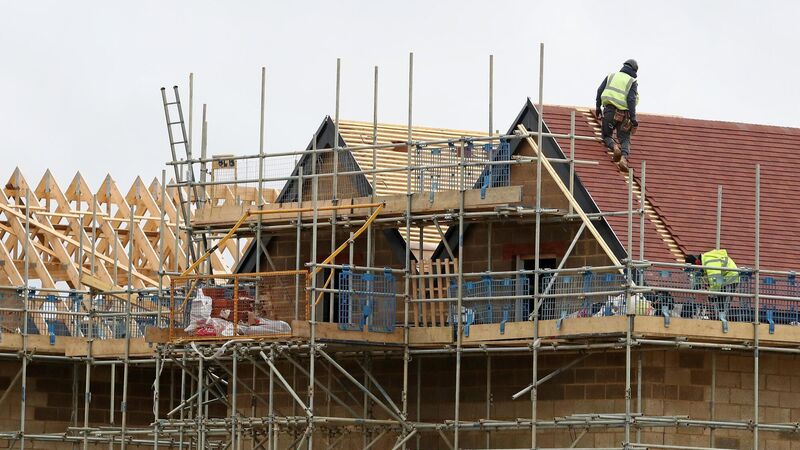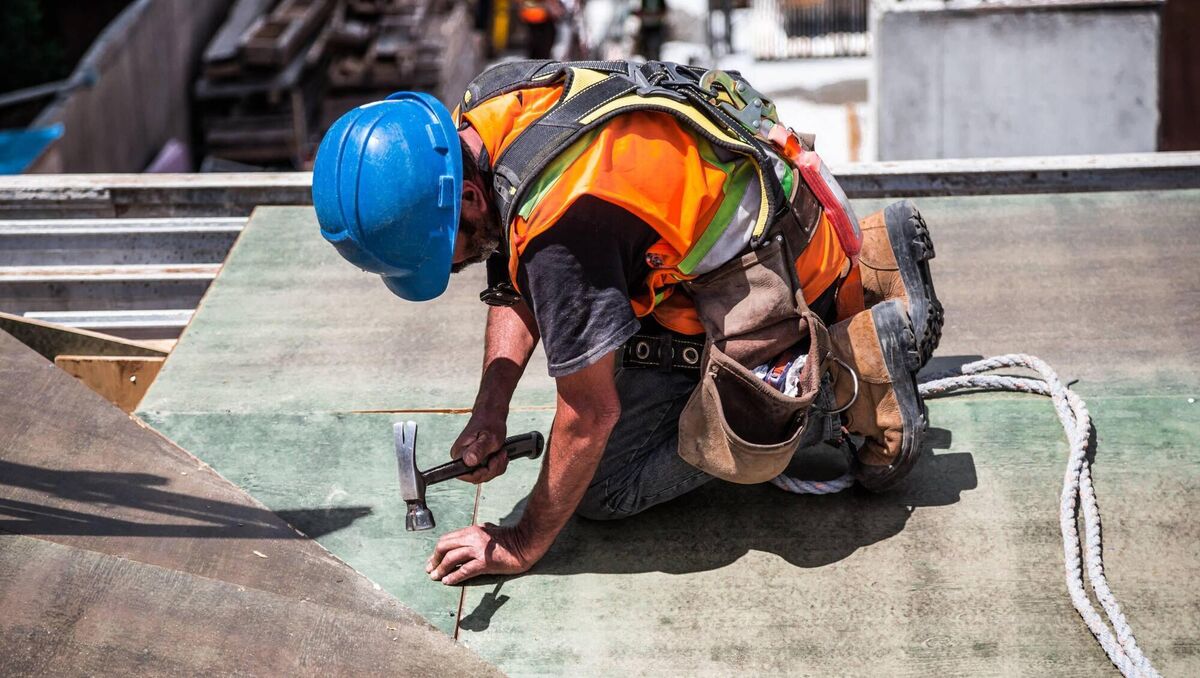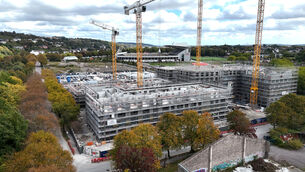Rory Hearne: Construction now part of precarious ‘gig’ economy

The Government should immediately create a state home-building and retrofit company in order to attract the workers to deliver homes, through quality permanent employment and apprenticeships.
In the coming years, we need to build a massive number of social and affordable homes, retrofit our housing stock to meet climate targets, and refurbish vacant and derelict buildings.
But there’s a shortage of skilled construction workers to build homes.
Young people are reluctant to enter a sector with job insecurity, bogus self-employment, and boom-bust bouts of unemployment and emigration.
The Government should immediately create a state home-building and retrofit company in order to attract the workers to deliver homes, through quality permanent employment and apprenticeships.
The state employs 41,000 nurses and 64,000 teachers to guarantee delivery of quality public health and education.
Yet housing is even more fundamental to our lives than health or education. Without decent housing we have nothing, and the quality, design, and space of our homes, are also essential.
Yet there’s no such state employment to directly deliver housing.
Construction has changed over the last decade.
Construction workers have become part of the precarious ‘gig’ economy with a shift from direct employment to subcontracting, particularly in the wet trades — bricklaying, floor and wall tiling, painting, plastering.
OPATSI, the plasterers trade union, highlight that in bogus self-employment, contractors hire tradespeople not as direct employees with protections, paying PRSI, but instead as self-employed, often not at sectoral rates of pay, without sick pay, or pension contributions.
The lack of direct employment also impacts the apprenticeship crisis, with neither contractors nor subcontractors taking on many apprentices.
We need 10,000 new apprenticeships a year but only registered 3,000 last year.
We need 115 plasterer apprentices but only 15 registered this year, and no floor and wall tiling apprentices registered since 2012.
Wet trades, and time put into apprenticeships, are undervalued, with tradespeople rarely required to show their qualifications, resulting in non-qualified personnel undertaking building work, impacting skills development, and quality of construction. Skilled workers are central to quality building.
Currently, the industry operates on self-regulation. Have we not learned from the Mica scandal or Grenfell disaster?
Despite major issues in the construction industry, the Government’s Housing For All plan is completely dependent on the industry to increase apprenticeships and attract new workers.
You might be surprised to hear that only a minority (40,000) of the total 150,000 construction workers in Ireland are actually building homes.
Many are building hotels and offices. In a housing emergency, it seems illogical to have our skilled workers building luxury hotels when there aren’t enough workers to build or retrofit homes. Disincentives such as heavy taxation on new hotel development are required.
There’s an office building boom ongoing.
When that bubble bursts, or there’s an international downturn, or rents fall, then global investors will stop funding office, hotel, and build-to-rent developments. Construction workers will be laid off and forced to emigrate.
Up to 70,000 construction workers who lost their job during the 2008 crisis emigrated. Many want to return with their families but unaffordable rentals and little prospect of owning their own home are stopping them.
Government failure to provide affordable homes through local authorities and NAMA, to bring into use the 180,000 vacant homes, and allowing rents and house prices to rise unsustainably, means it's even more difficult to attract construction workers.
The only way to attract and increase construction workers, while also guaranteeing the capacity to deliver homes, is for the Government to create a state-owned building company that would build and retrofit homes across the country.
Just as the public ESB company rolled out electricity across the country in the 20th century, we could deliver housing this way, call it Sustainable Home Build and Retrofit Ireland.
It should be a semi-state commercial enterprise with at least 10,000 workers, and regional delivery centres, building excellently designed and planned public housing developed by local authorities, not for profit housing cooperatives, housing associations and the Land Development Agency.
It could directly build 5,000 homes per year and retrofit thousands more.
The company would directly employ its workers and thus provide quality permanent jobs to building and construction sector workers, apprenticeships, and upskill construction workers.
CIE and ESB are semi-state companies offering decent pay and conditions and have little issue finding staff.
A public home building company could be just as successful.
The company could also achieve economies of scale in the purchase of materials, vital at a time of rising construction costs.

Some 13.4% of young people in Ireland (aged 15 to 29) are ‘NEETS’ — neither in education, employment, or training, higher than the EU average.
There’s a real opportunity to provide hope for these younger generations, through a career in a new state building company, offering a future with quality employment, building the affordable and climate sustainable homes they need.
We still lose young people every day to emigration, among them construction workers.
A sad irony is that they’re leaving because of a lack of affordable homes.
In total, 54,000 people emigrated from Ireland last year, most in their 20s and 30s.
There’s also potential to increase capacity by attracting more women into construction. Job security and conditions are important, particularly around issues like adequate maternity leave and family-friendly work practices. A public building company could lead in employing women in construction.
Unfortunately, the government's Housing for All plan does not move us away from boom-bust market economics, as half the 33,000 homes a year are to come from the private market, and many from international investment funds.
The setting up of a state building company is an urgent necessity if the Government is to build affordable homes and retrofit on the scale required and help overcome the boom-bust cycle in construction.
It is a question of whether policy will shift to treat housing as an essential part of society, or if we accept housing is left as a commodity, its provision fluctuating according to the vagaries of the market, and generations left with deepening housing inequality and a perpetual housing crisis.












